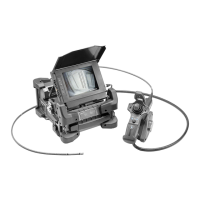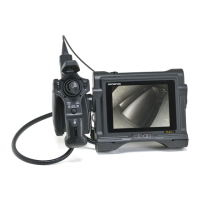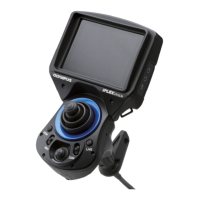What does ERROR (LV1) mean on Olympus Analytical Instruments?
- YYvonne SantosSep 12, 2025
The battery is almost dead. Stop inspection and replace the battery.

What does ERROR (LV1) mean on Olympus Analytical Instruments?
The battery is almost dead. Stop inspection and replace the battery.
What to do if the Olympus Analytical Instruments system cannot be turned off?
The base unit is damaged. Remove the AC adapter or the battery from the base unit to turn off the power.
| Type | Industrial Videoscope |
|---|---|
| Model | IPLEX FX Series |
| Light Source | LED |
| Image Sensor | CCD |
| Video Recording | Yes |
| Still Image Recording | Yes |
| Light Intensity | Adjustable |
| Field of View | 120° |
| Display | Color LCD |
| Insertion Tube Diameter | 4.0 mm, 6.0 mm |
| Insertion Tube Length | 2 m, 3.5 m, 7.5 m |
Information on the specifics of Rating plate A.
Details provided on Rating plate B.
Warning details for the LCD monitor.
Technical data on Rating plate C.
Warning information for the scope unit.
Explanation of the CARD warning mark.
Information regarding the battery warning plate.
Details concerning the cover warning mark.
Defines the proper applications for the IPLEX FX series.
Emphasizes the importance of reading the manual for safe operation.
Guidance on using compatible ancillary equipment to prevent damage.
States that user repair is not permitted and can cause damage.
Explains the meaning of DANGER, WARNING, CAUTION, and NOTE.
Lists essential safety warnings for instrument handling.
Details environmental conditions for optimal instrument performance.
Guidelines for safe operation and maintenance of the battery.
Steps to verify all items are present in the package against the list.
Identifies main components of the IPLEX FX system via diagram.
Details parts and operations of the base unit using diagrams.
Explains the parts and functions of the control unit via diagrams.
Describes different types of optical adapters and their parts.
Identifies parts and controls of the LCD monitor via diagram.
Instructions for safely moving the equipment case.
How to position the base unit for operation on its base or side.
Steps for safely changing the scope unit.
Guidance on connecting battery or AC adapter power.
Procedures for inspecting the scope's external appearance and distal end.
Steps for preparing the hook assembly for specific models.
How to inspect the optical adapter and its components.
Checks for the LCD monitor's screen and holding section.
Instructions for attaching and removing the shoulder strap.
How to attach the control unit to the base unit for carrying or operation.
Steps to turn the instrument's power on and off.
How to check the quality and clarity of the monitor image.
Explanation of various indicators on the screen.
How to select the preferred language for the interface.
Steps to set the system's date and time.
Instructions for configuring the attached optical adapter.
Verifying the scope's illumination system.
Adjusting white balance for accurate color representation.
Checking the smooth movement of the angulation section.
Checking and using the angulation lock mechanism.
Procedure for attaching the hook assembly for specific models.
Steps for inserting the scope and handling controls.
How to remove the scope from the object.
Steps for adjusting image freeze, zoom, and brightness.
Procedures for recording still images, audio, and video.
How to view and playback recorded images and videos.
How to navigate and use the main menu for settings.
Functions and settings available in the live/frozen screen menu.
Operations for managing images via thumbnail and retrieve screens.
Performing 3D measurements using stereo optical adapters.
Measuring object length using a defined reference.
Instructions for accessing recorded images on a computer using software.
Interpreting battery indicators and capacity levels.
Step-by-step guide for safely replacing the device's battery.
How to clean the scope and optical adapter safely.
Proper method for storing equipment in the carrying case.
Procedures for cleaning and storing the hook assembly.
Recommendations for storing the equipment in suitable conditions.
Common error messages and their solutions.
Solutions for common operational issues and malfunctions.
Specific error codes and descriptions for stereo measurement.
Information on contacting Olympus for repair services.
Environmental conditions for optimal instrument performance.
Details on scope units, optical systems, and dimensions.
Technical data for various optical adapter types.











